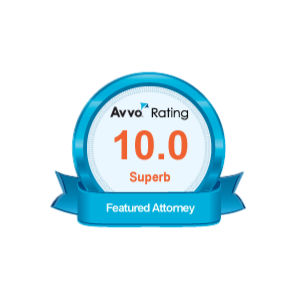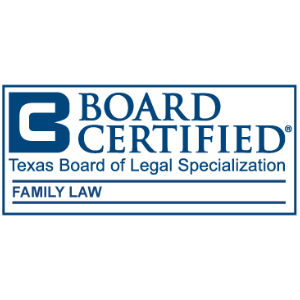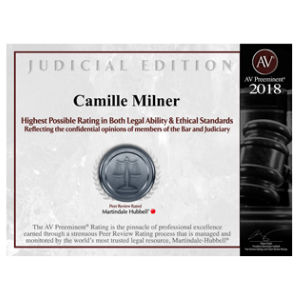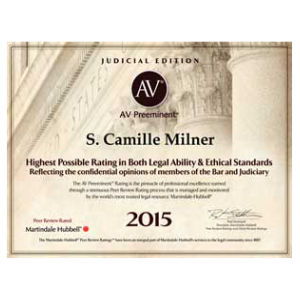Your Divorce Case
There are three primary methods for resolving your divorce case: the “Kitchen Table Model”, Collaborative Divorce and Traditional Adversarial Litigation or going to court.
“Kitchen Table Model”
While it is unusual, some parties are able to take advantage of the “kitchen table model” in resolving their dispute. In this model, the parties meet at some location like the kitchen table and work out an agreement regarding their legal dispute. After they have reached such an agreement, they can either hire attorneys to draft their pleadings (including a petition to commence the case in the court system) and agreed order or they can use forms which they prepare themselves and present those orders to the Court.
Collaborative Divorce
Why do I have a personal bias toward Collaborative Divorce?
My practice is primarily focused on Collaborative Divorce because I feel very strongly that it is much better than traditional litigation for almost all clients. After practicing for nearly twenty years, as a litigator in personal injury, workers’ compensation, civil litigation, family law, guardianship and probate, I was so pleased when the Collaborative Law Movement made its way to Texas in 2000. I am proud to have participated in nearly 100 successful collaborative cases. In the discussion below, the descriptions deal with family law; however, these processes are also being applied to estate planning and probate, guardianship and other areas of civil law.
What is Collaborative Divorce
Collaborative Divorce is a process in which the parties contractually agree that they will that they will not to go to Court. While this may at first sound limiting, the actual result is that the parties and the lawyers are not tempted to threaten to “go to Court if you don’t do what I want,” and they draw on all their creativity to develop their common interests, goals and options. The result is, in nearly 100% of the collaborative cases in which I have been involved, an agreement was reached that is much more satisfactory to the clients than if they had gone to Court. The fundamental basis for collaborative law is “interest-based negotiation” vs. “position-based negotiation,” which is the basis of the litigation system.
Why is Collaborative Divorce So Successful?
Collaborative Divorce is so successful because, with the help of trained collaborative lawyers, a collaboratively trained communications coach and financial planner, the parties are given the tools to negotiate an agreement between them that is THEIR AGREEMENT. Neither party will enter into any agreement without it being acceptable to them. Of course, this does not mean that each party is 100% satisfied with every element of the agreement, but they are satisfied with the compromises they have made to reach a total agreement. This is a striking contrast to the Court or jury having only a small window of time to learn all about the parties, their children, and their issues. In most cases, unfortunately, the result in Court was not as satisfactory as when the parties have been able to work on their agreement in the collaborative process. The basic philosophy is different in that, unlike in litigation, where there is almost always a “winner” and a “loser,” in Collaborative Law cases, the parties feel that together they have developed a “win-win” for both parties and certainly for any children of the relationship.
What are The Mechanics of the Collaborative Divorce Process?
Each lawyer and client and the communications coach and financial planner meet in what are called a “joint sessions.” These sessions are scheduled as closely as the parties wish. In between the joint sessions, the parties meet with the communications coach and financial planner to work on the clients’ interests, goals, and options in the case. In cases involving children, some parties also engage the services of a child specialist to assist them in developing a parenting plan that will be the most beneficial to the parties and their children. At first blush, one might think that bringing in these additional professionals would make the expense greater, but what we have found is the contrary. Because the parties are able to develop their interests, goals and options with either the communications coach or the financial professional (at a much lower hourly rate than the attorneys), fewer joint sessions are needed and the cases settle more smoothly and more cost effectively overall. When the joint sessions resume after the parties have met with the communications coach and the financial planner, the parties are then prepared to coordinate the work that they have done with the communications coach and the financial planner, and enter into a final agreement. Either one party files a petition in their family law matter or the parties file a joint petition with the district clerk’s office in a divorce matter this filing commences the “running” of the 60-day waiting period, which is a requirement of Texas law for a divorce. Then, the parties and their attorneys and the other professionals in the process will assist in the development and drafting of an Agreed Decree of Divorce or whatever other order is applicable in their family law case, and that Decree or order will be presented to the Court after all parties have agreed to all its terms and signed it.
What is the Cost of Collaborative Divorce Compared to Traditional Adversarial Litigation?
The cost of negotiating a case in the collaborative process can be and is often less expensive than historically in a traditional case, whether settled out of Court or tried by a judge or jury. In the collaborative process, the parties are in complete control of how much time is needed to satisfactorily negotiate and settle their case. If the issues are limited, some cases can be resolved in two or three joint sessions, whereas in other cases, if the issues are more complex property issues or children’s issues, it may take longer. However, most everyone involved in collaborative law would agree that if a case is handled in the collaborative process it will be less expensive and less time-consuming than if it “goes to Court,” to be decided by either a judge or a jury. A number of cases with limited issues have been settled in the collaborative process in Denton County for a total cost of no more than $7,500.00, including the cost of both attorneys, the communications coach and the financial planner.
What if there are Unresolved Issues?
Have we lost the investment of time and money?
Must we then go to Court?
From time to time, the parties, after resolving almost all the issues in their case, are unable to resolve a couple of final issues. In those cases, rather than abandoning the entire process and “going to Court,” in almost 100% of the cases in which I have participated and am familiar with, engaging the services of a mediator helps the case get over “that last bump,” and the case is ready for final signature of the Court. One of the most renowned mediators in Texas, Coye Conner, has mediated a number of collaborative cases that have one or two issues unresolved, and he has reported a 100% success rate in resolving those cases without the need of “going to trial.”
Litigation
How is the lawsuit commenced?
Whether there is a collaborative process, an agreed order after a “kitchen table” agreement, or litigation, a petition must be filed to commence a case in our justice system. The party who files the petition is called “the Petitioner;” then the other party, “the Respondent,” will be served with the petition and any additional temporary emergency orders (such as a Temporary Restraining Order or an Emergency Protective Order).
What is Discovery?
Written questions called Interrogatories, a Request for Production or Documents and a Request for Disclosure, collectively called “discovery,” can also be filed and served with the original petition. After the Respondent receives the petition (and any additional documents), he or she will have until “the Monday next following twenty-one days from the date of service” to file what is called an original answer; this tells the Court that the Respondent wants to have a “say” in the outcome of the case. From that point on there may be additional Interrogatories, a Request for Production or Documents and a Request for Disclosure sent by the Respondent to the Petitioner. If these discovery documents are served with the original petition the Respondent has fifty days to answer the discovery documents. Otherwise, each party will have thirty days to answers the discovery requests.
What happens between the filing of the petition and the final hearing?
Temporary hearings may be had (where issues such as temporary spousal maintenance, who pays what during the pendency of the case and who resides in the family residence, temporary custody, visitation and child support are decided. Depositions may be taken, psychological evaluations and social studies may be ordered by the Court to investigate the parties requesting custody or visitation with the children, and real and/or business appraisals may be ordered by the Court. These hearings, discovery, and appraisals, for example, take extensive amounts of time and are costly for the parties who are preparing for trial. Prior to trial there may be pre-trial hearings and the Court may order mediation. When one party decides to set the case for final hearing, his or her attorney must schedule with the Court Administrator and give the opposing side at least seventy-five (75) notice of the final hearing. One side or the other may request a reset for a variety of reasons, which may delay the date for the final hearing.
What is Mediation?
A third party who has been trained to mediate cases will schedule for the parties to spend usually a day with him or her, in separate rooms at the same office, and the mediator will attempt, by going back and forth between the rooms, to negotiate an agreement between the parties. If the mediation is successful, the parties will sign what is called a “Mediated Settlement Agreement,” and an order will be prepared by the attorneys based upon that mediated settlement agreement. This order will be presented to the Court for entry (signature of approval).
What does it mean to “go to trial?”
If the mediation is not successful, the parties and their attorneys will continue preparing for trial, which can be in front of a judge or a jury, depending on the issues in the case. A trial can last a portion of a day, weeks or in some rare occasions, months. At the end of the trial the Court or jury will reach a decision as to the issues in the case. That order will be written up by the attorneys and signed by the Court. This can also take additional time for preparation and consideration by the Court.
When can the final order be appealed?
If one side or the other is not satisfied with the outcome of the trial, either can file an appeal upon proper legal grounds.
This will extend the final outcome of the case and will be additional cost the parties.
To Resolve Your Divorce Case – Contact an Experienced Denton and North Texas Area Divorce Lawyer
Camille Milner is board certified in family law by the Texas Board of Legal Specialization. Call today to schedule an appointment at 940-383-2674.











